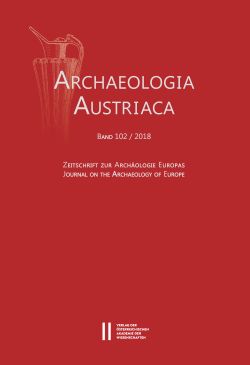
Archaeologia Austriaca 102/2018, pp. 135-168, 2018/10/23
Zeitschrift zur Archäologie Europas
Journal on the Archaeology of Europe

It has recently been suggested by British archaeologists and anthropologists that mummification may have been widespread in Bronze Age Europe. This article presents the results of a study that, for the first time, investigates the question of whether the people who inhabited central Europe during the Early Bronze Age treated the bodies of their dead prior to deposition in order to prevent decay and preserve the soft tissue. The study relies on data from the cemetery of Franzhausen I in Lower Austria. The cemetery, excavated between 1981 and 1983, contained 714 Early Bronze Age graves and two pits with human remains. A sample of 22 skeletons from 22 graves was investigated using macroscopic, post-hoc archaeothanatological, and histotaphonomic analyses. Thin sections of the femora of 18 out of 22 individuals show high degrees of microbial tunnelling resulting from extensive putrefaction processes. Thin sections of femora from four individuals show less bioerosion indicating that the microbial invasion accompanying autolysis and decomposition was arrested at an early stage of the taphonomic process. Since the femora of these four individuals are partially discoloured green we lean towards the assumption that the good preservation of the internal bone microstructure was caused by a post-depositional uptake of heavy metals eroding from copper and bronze grave goods, mediated by a coffin environment.
Keywords: Funerary customs, mortuary archaeology, mummification, corpse preparation, archaeothanatology, bone diagenesis, histotaphonomy, Early Bronze Age, Lower Austria, Franzhausen I.